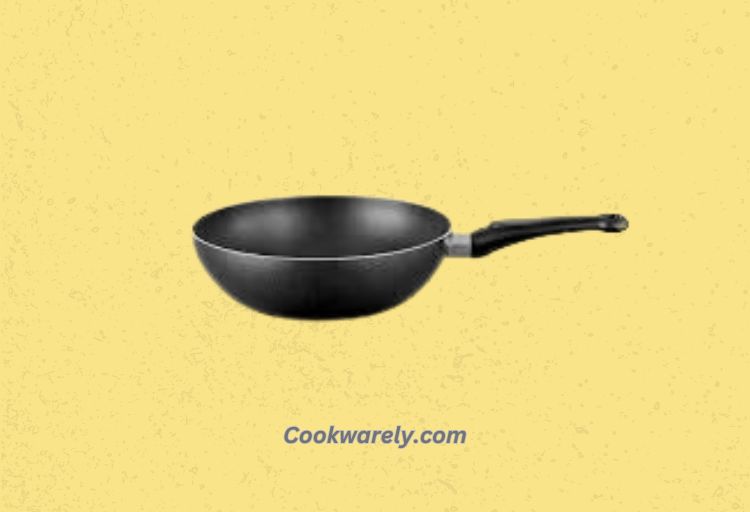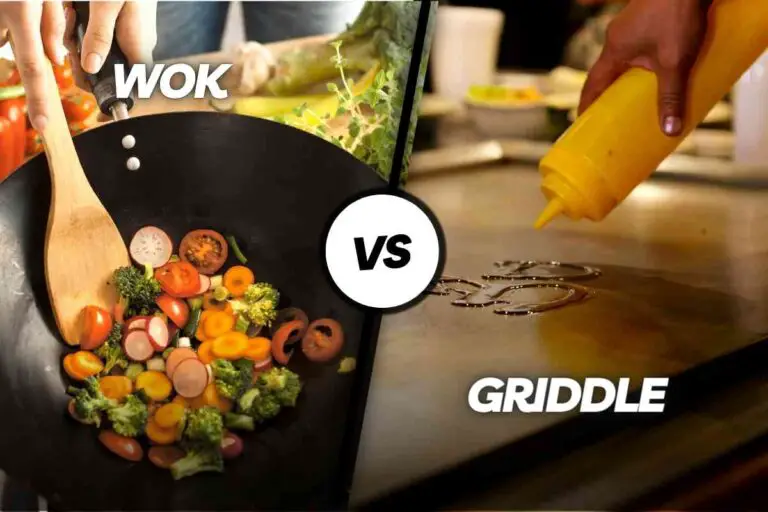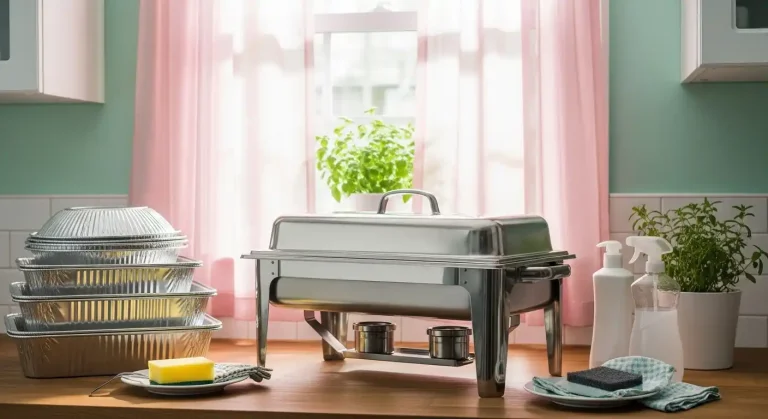Can Induction Cooktops Be Used When Camping Practical Tips and Considerations
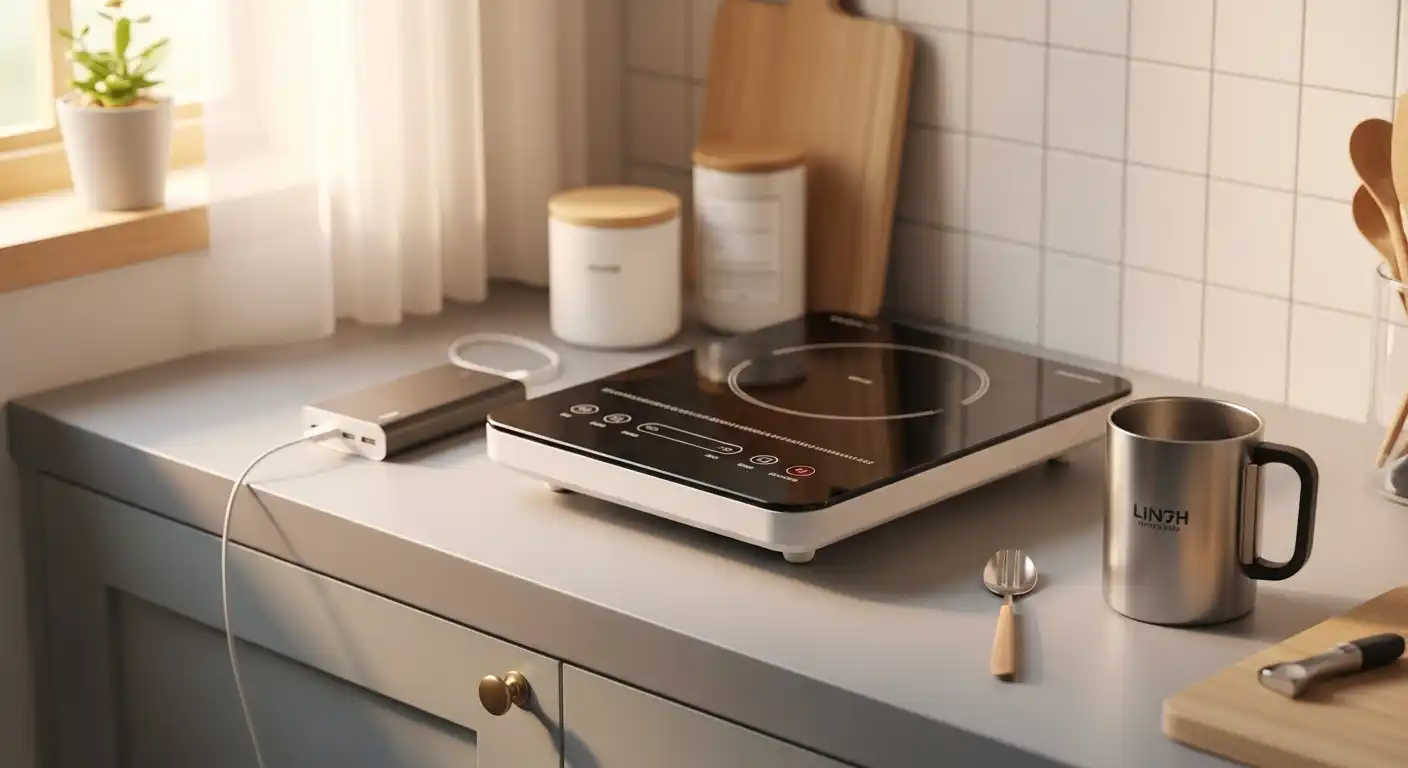
Induction cooktops can be used when camping, but they require a reliable power source such as a generator, inverter, or portable power station to function.
The key to successful induction cooking outdoors is ensuring access to sufficient electricity, typically between 1200 to 1800 watts, depending on the cooktop’s power rating.
Without this, the induction unit cannot operate, making power solutions essential for camping setups.
Many campers appreciate induction cooktops for their efficiency, safety, and quick heating, which offer a modern alternative to traditional propane or fire cooking.
However, they must use compatible cookware and plan power usage carefully, especially in remote or off-grid locations.
This balance of convenience and preparation defines whether induction cooking fits their camping style.
Understanding Induction Cooktops for Outdoor Use
Induction cooktops rely on specific technology and power requirements that influence their suitability for outdoor environments like camping.
Their design impacts portability, and they differ significantly from traditional camping stoves in how they generate heat and function.
How Induction Cooktops Work
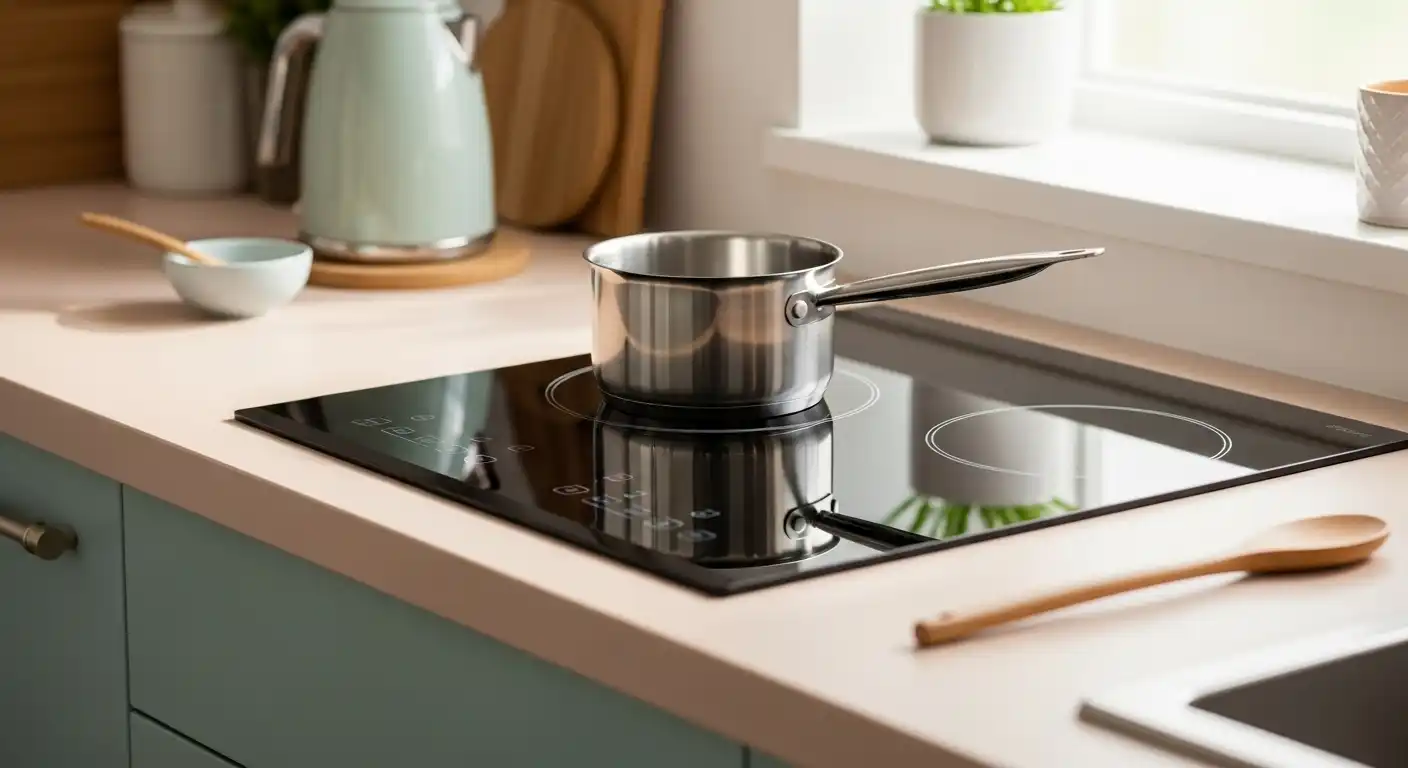
Induction cooktops operate by creating an electromagnetic field that directly heats compatible cookware.
The cooktop itself does not produce heat; instead, magnetic energy induces heat in ferromagnetic pots or pans.
This process requires cookware with a magnetic base, such as stainless steel or iron.
Aluminum and copper pans without magnetic material will not work.
A consistent electricity source is essential to power the induction coil.
Without electricity, the cooktop cannot generate the necessary electromagnetic field, making power availability a critical factor for outdoor use.
Portability of Induction Cooktops
Induction cooktops are available in portable models designed for camping and outdoor use.
These units tend to be compact and lightweight but still require access to electricity.
They may be powered by generators, portable power stations, or battery systems, but this setup adds complexity and weight compared to traditional fuel-based stoves.
The need for electricity limits locations where induction cooktops can be used.
Remote campsites without reliable power are generally unsuitable unless the camper brings a dedicated power source.
Differences from Traditional Camping Stoves
Traditional camping stoves typically burn propane, butane, or liquid fuel, producing a flame to heat cookware. This means they function independently of electricity.
Induction cooktops, in contrast, require compatible cookware and electricity but offer precise temperature control and faster heating.
Safety differs as well. Induction cooktops have no open flame, reducing fire risk, but are more sensitive to water and weather exposure.
| Feature | Induction Cooktop | Traditional Camping Stove |
|---|---|---|
| Power Source | Electricity | Propane, Butane, Liquid Fuel |
| Heat Generation | Electromagnetic induction | Open flame |
| Cookware Compatibility | Magnetic-based cookware only | Works with any heat-resistant vessel |
| Portability | Depends on power availability | Generally lightweight and fuel-based |
| Safety | No open flame, electrical risks | Open flame, fire hazards |
Power Requirements and Compatibility
Induction cooktops need a reliable and consistent power supply to function properly.
Campers must understand the type of electrical sources available, how to use batteries and generators effectively, and the impact of wattage on power consumption and efficiency.
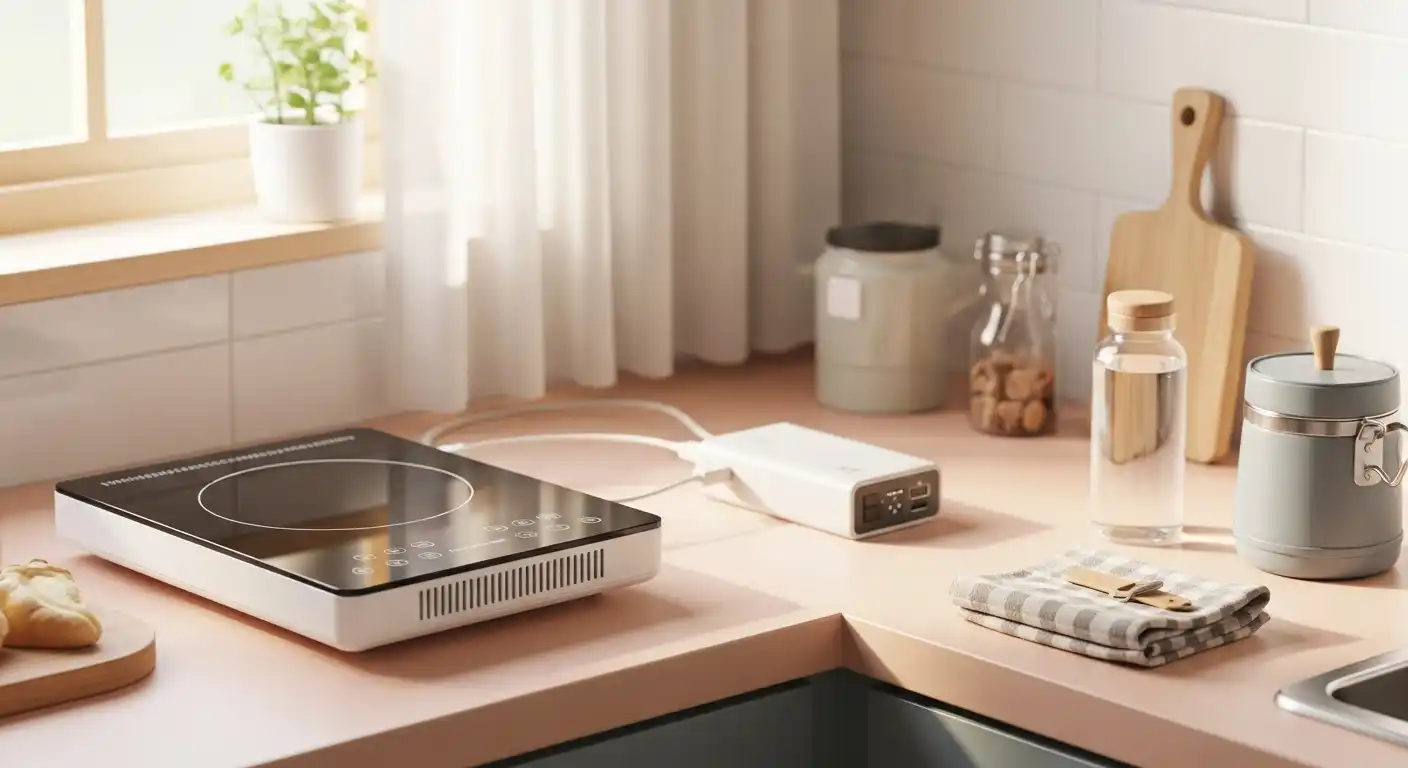
Electricity Sources for Camping
Induction cooktops require an electrical power source, typically 120V AC, which is not commonly available at all campsites.
When camping, options include hookups at RV parks, portable generators, or battery-powered setups.
Standard electrical outlets at campgrounds can power portable induction cooktops directly.
However, many camping locations lack access to grid power, necessitating alternative solutions.
Solar panels paired with battery storage often supplement these needs but may struggle with high wattage draw devices unless sized properly.
Campers must verify outlet compatibility and ensure the power source delivers the voltage and current the cooktop needs for optimal performance.
Battery and Generator Options
Portable power stations combine batteries and inverters to provide a compact energy solution for induction cooktops.
These devices vary in capacity, typically measured in watt-hours (Wh), influencing how long they can power the cooktop.
Generators provide steady and high output energy but require fuel, noise management, and ventilation.
Inverters can convert 12V DC battery power to 120V AC, but it’s essential to match the wattage rating to the cooktop’s power demands.
Battery and generator setups should be chosen based on cooktop wattage and expected usage duration.
Solar-charged batteries offer renewable options but need adequate sunlight and capacity.
Wattage and Efficiency Considerations
Induction cooktops commonly consume between 1200 and 1800 watts at full power.
Lower watt models exist but may cook more slowly. The wattage directly affects battery drain and generator fuel use.
Cooktops with variable power settings allow reduced wattage, which conserves energy and extends battery life.
An 1800-watt cooktop operating at half power draws approximately 900 watts, improving efficiency during use.
Consider the continuous output rating of the power inverter or generator to ensure it can sustain the cooktop’s peak wattage.
Overloading power sources can damage equipment or cause shutdowns.
| Factor | Recommendation |
|---|---|
| Typical cooktop wattage | 1200–1800 watts |
| Minimum inverter rating | ≥ 1800 watts continuous output |
| Battery capacity (Wh) | > 1500 Wh recommended for extended use |
| Generator size | ≥ 2 kW recommended for multiple appliances |
Practical Considerations When Camping
Using an induction cooktop while camping requires attention to power availability, compatible cookware, and outdoor safety.
Each of these factors can impact how effectively and safely the cooktop performs in a camping environment.
Weather and Environmental Factors
Induction cooktops require a stable electrical source, often challenging in unpredictable outdoor conditions.
Rain, wind, and dirt can interfere with electrical connections and pose hazards.
Campers should keep the cooktop sheltered from moisture and wind. Using a tent or covered cooking area helps maintain consistent operation.
High humidity or wet conditions increase risks of short circuits, so waterproof or water-resistant power supplies and connections are advisable.
Extreme temperatures may affect battery or inverter performance. Cold weather can reduce battery efficiency, while heat may overheat electrical components.
Adequate ventilation and temperature management are necessary to avoid damage.
Suitable Cookware for Induction Cooking
Induction cooktops function with cookware made of ferromagnetic materials.
This includes stainless steel, cast iron, and some aluminum pans with magnetic bases.
Non-compatible cookware such as glass, copper, or non-magnetic aluminum will not work.
Campers must ensure all pots and pans are induction-ready to avoid wasted energy or inability to cook.
Durability and weight also matter for camping. Cast iron is effective but heavy, while stainless steel offers a good balance of weight and compatibility.
Cookware should withstand outdoor use and maintain magnetic properties over time.
Safety Precautions Outdoors
Safety is crucial when running electrical appliances outdoors.
Induction cooktops use high wattage—inverters for power should be rated for 1200 to 1800 watts or more to prevent overloads.
Cords and connections must be placed away from water, high foot traffic, and flammable materials.
Using ground fault circuit interrupters (GFCIs) reduces the risk of electric shock.
Users should avoid touching hot cookware or the cooktop surface during operation.
While induction cooktops don’t heat the cooktop plate directly, residual heat from pans can cause burns.
Proper storage and handling of electrical equipment protect the system and users throughout the camping trip.
Tips and Alternatives for Campsite Cooking
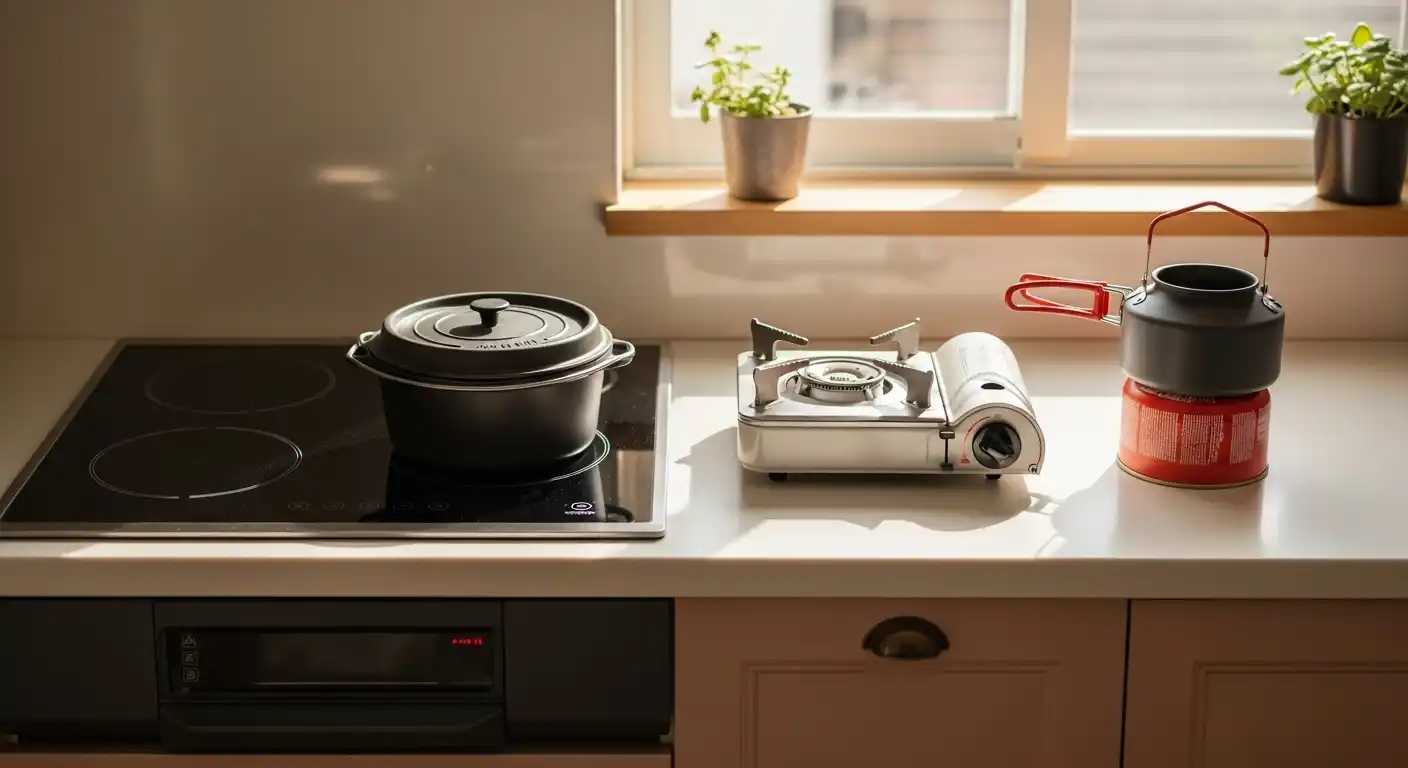
Managing power efficiently and choosing the right cooking tools are essential for effective campsite cooking.
Proper maintenance and storage are also critical to keep equipment functional and safe during trips.
Optimizing Energy Usage in the Outdoors
Induction cooktops require a stable electrical supply, usually between 1200 and 1800 watts.
Campers using batteries or solar power should ensure their inverter can handle this load to avoid power interruptions.
Using cookware that matches the induction surface improves efficiency and reduces energy waste.
Magnetic stainless steel or cast iron pots are best. Avoid cookware without magnetic properties, as it won’t work.
Setting the cooktop to moderate heat levels conserves energy. Starting with lower settings often prevents power spikes and extends battery life.
Bringing a portable power station with adequate capacity or supplementing with solar panels provides a more reliable energy source during extended camping.
Alternative Cooking Solutions for Camping
Propane stoves remain a favored alternative due to their portability and independence from electrical sources.
They heat quickly and are compatible with various cookware, making them versatile.
Campfires offer a traditional method, though they require more preparation and proper site safety measures.
They can support multiple cooking styles but are less precise than induction or propane.
Portable butane or multi-fuel stoves work well in off-grid locations and are lighter than many induction setups. Their fuel is easy to carry and store.
Some campers combine solutions, using induction cooktops in RVs where electricity is stable, and propane or fire for remote camping.
Maintenance and Storage Advice
Cleaning induction cooktops after each use prevents residue buildup and sensor malfunctions.
Use a soft cloth and avoid abrasive materials that can scratch the surface.
Store induction cooktop cords and accessories in a dry, padded container to prevent damage during transport.
Moisture and physical impact can degrade electronics.
Cookware should be cleaned and dried thoroughly before packing to avoid rust or corrosion, especially for cast iron.
Regularly inspecting power inverters and batteries for wear ensures they remain functional and safe.
Replace worn or damaged components before trips to prevent failures.
Proper storage extends the life of camping cooking gear and reduces replacements over time.

